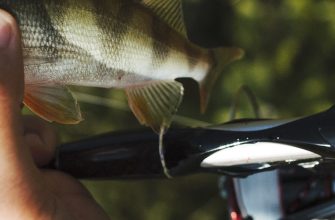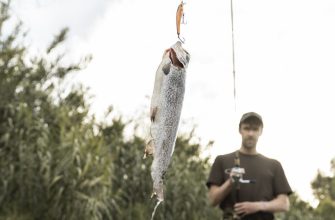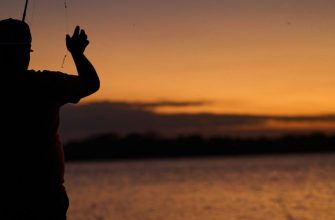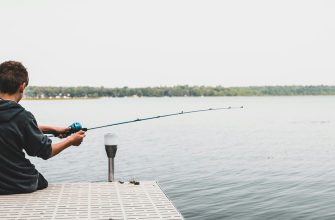- All About the Arkansas White River Water
- The Role of Water Conditions in Trout Behavior
- Understanding Seasonal Water Changes
- Changing Water Levels
- Minimum Flow (No Generators Running)
- 1 to 4 feet higher than the minimum flow
- 4 to 10 feet higher than the minimum flow
- Types of Trout in the White River
- Fishing Seasons
- Best Times of Year
- Seasonal Fishing Restrictions
- Where Are All the Fish in White River?
- Understanding the Water Flow and Stream
- The Lucky Fishing Spots along the Miles of the White River
- Essential Gear
- Required Rods, Reels, Lines and More
- Choosing the Right Tackle
- Best Bait and Lures
- An Overview of Effective Trout Bait
- Lure Selection: Matching the Hatch
- Effective Fishing Techniques
- Mastering the Art of Casting
- Reading the River: Where to Find Trout
- Ensuring a Successful Fish
- Proven Lure Techniques for Trout
- Fly Fishing for Trout in Arkansas White River
- Essential Fly Fishing Gear
- Setting Up Your Pole
- Fly Casting Techniques for Success
- Choosing the Right Flies
- Rigging Tactics for Big Trout
- Basics of Rigging for Trout
- Advanced Rigging Techniques
- Knot Tying: Securing Your Catch
- Tips and Tricks for White River Trout Fishing Adventure
- Understanding Trout Behavior
- Proven Tricks for Successful Trout Fishing
- Seasonal Tips for Trout Fishing in White River
- Fishing Guides
- Why Hire a Fishing Guide?
- What to Expect from a Fishing Guide
- Finding a Qualified Guide
- Fishing Regulations
- Arkansas Fishing Regulations
- Ensuring a Safe and Legal Fishing Experience
- Best Practices for Lucky Trout Fishing in White River: Catch & Release
- Ethical Catch & Release: Ensuring Trout Survival
- Catch & Release areas in the White River
- Utilizing Lures and Baits for Successful Catch & Release
- FAQs
- Q: What are some angling tips for trout fishing on the White River in Arkansas?
- Q: Where is the best location for trout fishing on the White River?
- Q: What fishing techniques are effective for catching trout in the White River?
- Q: Do I need a special permit for trout fishing on the White River?
- Q: What is the catch-and-release policy on the White River?
- Q: When is the best time of day for trout fishing on the White River?
- Q: What should I be aware of when fishing near Bull Shoals Lake?
- Q: What are some important considerations for using a fishing line for trout fishing?
- Q: How can I identify good fishing spots for trout on the White River?
- Q: Are there any specific regulations for bait and lures when fishing for trout on the White River?
Deep in the heart of America, you’ll find a gem that holds a special place in the hearts of many – the majestic White River. Spanning across several states, it is particularly famous in the North Fork region, where it’s been lovingly maintained by the corps of engineers. This waterway is a dream come true for those who love the thrill of the hunt.
This waterbody is not just any ordinary body of flowing water; it has a charm and beauty that is second to none. Imagine standing close to the water’s edge, your monofilament line at the ready, waiting for that moment of excitement. It’s a place where the worries of the world seem to melt away, as you become one with nature.

Don’t worry if you’ve never been here before. This article is your manual for comprehending the secrets of the White River. We’re going to delve into the depths of this incredible waterway, giving you tips and tricks that will enhance your experience.
So, get ready to embark on an unforgettable journey. By the time you’re through with this article, you’ll be prepared to tackle the challenges of the White River like a pro. Every inch of this article is packed with valuable information designed to help you maximize your experience. So, let’s get started!
All About the Arkansas White River Water
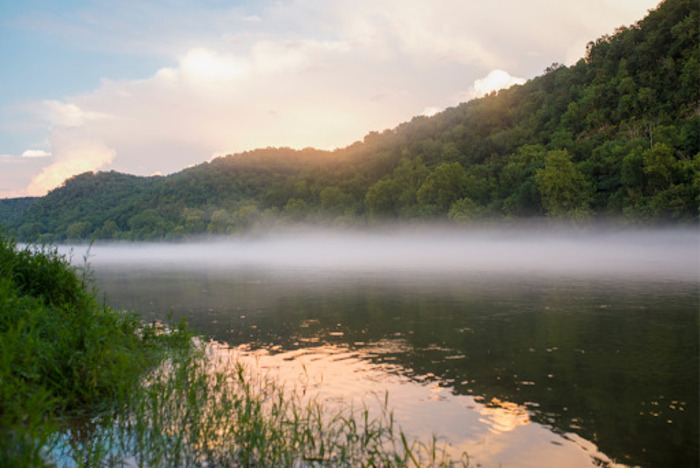
The White River, a gem of natural beauty, is characterized by its clear, cold water, a product of its origin in the Boston Mountains. This waterway, flowing through northern Arkansas, provides an ideal environment for a rich diversity of aquatic life. Its cold, oxygen-rich waters are particularly conducive to trout, making it a paradise for fishing enthusiasts.
The Role of Water Conditions in Trout Behavior
The behavior of trout is significantly influenced by the water conditions. The waterbody’s cold, oxygenated water supports a healthy trout population. However, the fish’s activity levels and feeding patterns often change with fluctuating water temperatures and oxygen levels, making an understanding of these conditions crucial for successful fishing.
Understanding Seasonal Water Changes
Seasonal changes can significantly impact the conditions of the White River. In the warmer months, water levels can rise due to increased rainfall, which can affect the waterbody’s current and temperature. Conversely, in the colder months, lower water levels can lead to slower currents and colder waters. These changes can influence the distribution and behavior of trout, and understanding these shifts can enhance the fishing experience.
Changing Water Levels
Minimum Flow (No Generators Running)
During periods of minimum flow, when no generators are running at the dam, the water level of the White River is at its lowest. This can result in slower currents and clearer waters, providing optimal conditions for sight fishing.
1 to 4 feet higher than the minimum flow
When the water level is 1 to 4 feet higher than the minimum flow, the current becomes stronger, and the water becomes slightly murkier. This can lead to changes in trout behavior and different fishing techniques may be required to achieve success.
4 to 10 feet higher than the minimum flow
As the water level rises 4 to 10 feet higher than the minimum flow, the current becomes faster, and the water becomes significantly murkier. During these conditions, trout often seek refuge in slower-moving waters, making areas near the riverbanks potentially fruitful fishing spots.
Types of Trout in the White River
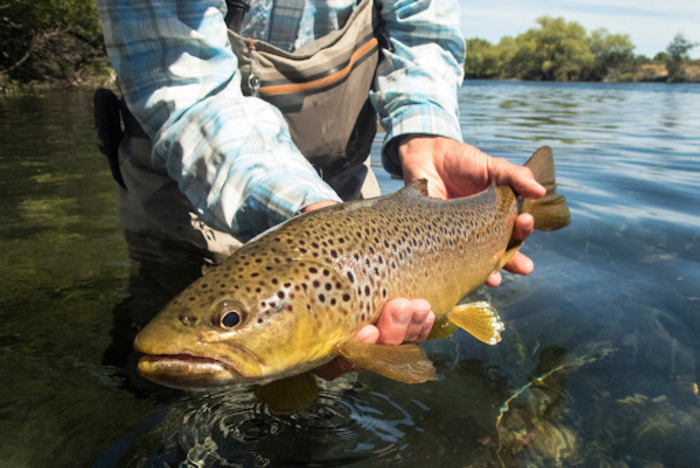
Recognizing the different trout species in this waterway can truly enhance your fishing experience. Let’s dive into the identifying features of each species:
- Rainbow Trout: These fish are named for their beautiful, multi-colored appearance. They typically have a greenish-blue hue on their back, silver on the underside, and a pinkish stripe along their side.
- Brown Trout: They are easily recognizable by their brown color and large black and often red spots with pale halos on their sides.
- Cutthroat Trout: Named for the distinctive red color under their jaw, these fish have a yellowish-green to grayish body with scattered black spots.
- Brook Trout: These are the smallest trout in this waterway and are identified by their dark green to brown color with a distinctive marbled pattern of lighter shades and worm-like shapes across the fish’s back.
These diverse species make the White River a dynamic and rewarding location for a fishing trip.
Fishing Seasons
Trout are cold-water fish, and their activity levels can significantly change with the seasons. During the warmer months, they tend to feed more aggressively and are more active. Conversely, in the cooler months, trout tend to be more lethargic and feed less frequently.
Read more: Best Trout Fishing in the US 2024 – Best Trout Streams & Rivers to Catch Trout
Best Times of Year
While you can find trout in the White River year-round, the best times to fish for them are during the spring and fall months. In the spring, the water temperatures are just right for the trout to be active and feed heavily. In the fall, the trout are preparing for the winter months and are often more aggressive in their feeding.
Seasonal Fishing Restrictions
It’s important to note that there may be restrictions or rules on fishing during certain times of the year. These restrictions are often put in place to protect the fish populations and ensure that they continue to thrive. Always check with local authorities or a trusted fishing guide before heading out to fish to ensure that you are fishing within the law.
Where Are All the Fish in White River?
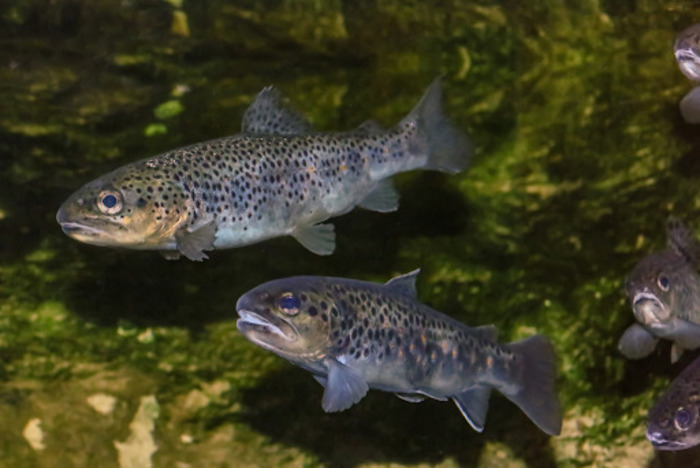
Understanding the Water Flow and Stream
The dynamics of the waterways play a significant role in the distribution and behavior of the local aquatic life. The flow can have a direct influence on where you’ll find the fish.
The water flow varies throughout the year, influenced by regular dam releases. The stream’s characteristics can change rapidly, altering the distribution of fish.
The Lucky Fishing Spots along the Miles of the White River
The White River stretches over many miles, and certain locations along this lengthy waterway have proven to be lucky spots for fishing enthusiasts. Here are a couple of places that might increase your chances of a great catch.
The Wildcat Shoals, a few miles downstream of Cotter, is one of the popular spots among locals and tourists. It’s known for its diverse aquatic species and is perfect for a fishing adventure any time of the year.
Another hotspot is Rim Shoals, located downstream of the Cotter Bridge. It provides a wide variety of fishing experiences, from wading to boat fishing. Fly fishers love this spot for its calm waters and ample fishing opportunities.
Essential Gear
Required Rods, Reels, Lines and More
The heart of your gear setup is the rod, reel, and line. In Arkansas’ White Waters, a spinning rod and reel combo of medium power is ideal for beginners. This equipment is versatile, user-friendly, and can handle most trout species you will encounter. The line should be monofilament, around 4-6 lbs test, offering a good balance between strength and visibility.
Beyond the fundamental rod, reel, and line, additional gear includes fishhooks, weights, and bobbers. Hooks should be size 10-12 and weights need to be light enough to allow your bait to naturally drift down the stream. Bobbers help in maintaining the depth of your bait and signal when a trout has taken interest in your offering.
Choosing the Right Tackle
The choice of tackle is equally important and largely depends on the type of trout you aim to fish. Live baits such as worms and minnows are often successful, but artificial lures can also be very effective. The key is to match your lure or bait to what the trout are naturally feeding on at any given time.
Best Bait and Lures
An Overview of Effective Trout Bait
When it comes to successful trout fishing, it’s essential to use the right bait. Natural baits, such as minnows, worms, and insects, are highly effective due to their familiarity with the trout varieties that inhabit these waters. These baits can be live or artificial, but it’s critical to ensure that they mimic the natural food sources of the trout.
Lure Selection: Matching the Hatch
‘Matching the hatch’ is a familiar term among seasoned anglers. This strategy involves selecting lures that resemble the current insect hatch that trout are feeding on. In the White River, there’s a diverse range of insects that hatch throughout the year, providing a rich food source for trout. Therefore, lures resembling these insects can be particularly effective.
Effective Fishing Techniques
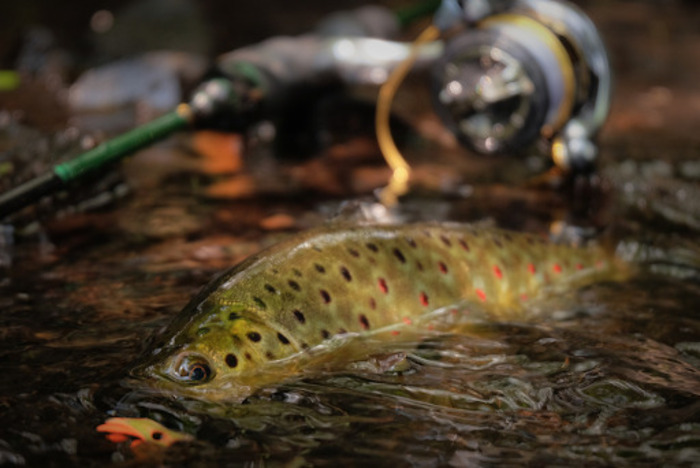
Mastering the Art of Casting
Casting is a fundamental skill in trout fishing. Properly casting your line ensures that your lure lands in the right spot and attracts the attention of the trout. Practice your casting technique in various conditions to adapt to the environment and the behavior of the fish.
Reading the River: Where to Find Trout
Understanding the behavior of trout in the waterway is key to successful fishing. Trout prefers cooler, oxygen-rich waters, so look for areas of the river where there’s shade, deeper waters, or near obstacles in the water. These spots are typically where trout rest and feed.
Ensuring a Successful Fish
Once you feel a bite, it’s important to set the fishhook properly to secure the trout. A firm and quick upward jerk of the fishing rod will help ensure the hook is firmly lodged in the trout’s mouth. Be careful not to jerk too hard as it might cause the line to snap.
Proven Lure Techniques for Trout
One of the proven fishing techniques involves the use of float jigs. This method allows the lure to drift naturally with the current, making it more attractive to trout. Different lures work better in different conditions and for different trout varieties. Artificial lures such as spinning rods and spoons can be effective.
Another effective technique is fly fishing, which uses light lures that mimic the behavior of flying insects.
Be sure to take into account local rules regarding the use of live bait or artificial lures.
Fly Fishing for Trout in Arkansas White River
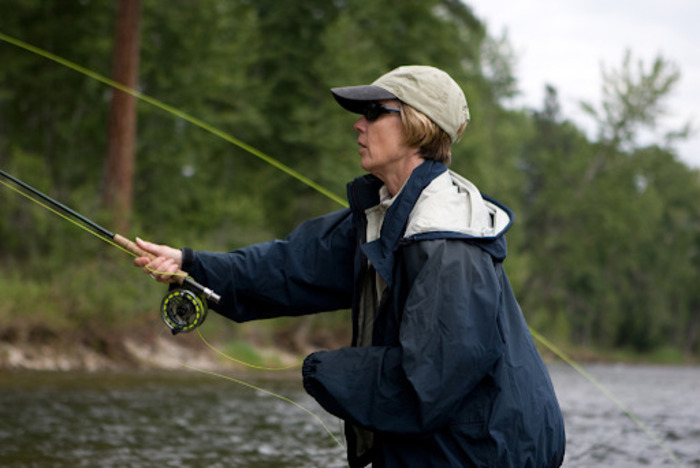
Essential Fly Fishing Gear
The first step to embarking on your fishing trip is ensuring you have the right equipment. A sturdy fly rod and reel are paramount. Choose a rod that feels comfortable in your hand and a reel that is smooth and easy to operate. Remember, the key is to balance the rod and reel with the weight of the line you’re using.
Setting Up Your Pole
After acquiring your gear, the next step is to set up your pole. Start by threading your line through the rails on your rod, then attach your reel. Next, tie your chosen fly onto the end of your line using an improved clinch knot, ensuring it’s secure.
Fly Casting Techniques for Success
Perfecting your fly casting technique can greatly enhance your chances of a successful fish. Practice your casting before hitting the water to get a feel for the motion. Remember, it’s all about timing, not power. The aim is to get your line to unroll in a straight line before you.
Choosing the Right Flies
Selecting the right fly can be the difference between a successful day on the water and going home empty-handed. The choice of fly can depend on a variety of factors, such as the time of year, the water temperature, and what the trout is feeding on at that particular time. One common choice among fishermen is the Woolly Bugger, an artificial fly that can mimic a variety of aquatic life forms that trout feed on.
Rigging Tactics for Big Trout
Basics of Rigging for Trout
When it comes to successful trout fishing in the White River, rigging techniques can make the difference between a rewarding day and going home empty-handed. The basic rig setup includes a line, a weight, and a lure. The weight is crucial to help your bait sink down to where the trout are – often near the bottom. The type of lure you choose can vary, but make sure it’s one that trout find irresistible. Generally, it should mimic the natural diet of the trout.
Advanced Rigging Techniques
For those after larger trout, advanced rigging techniques can be a game-changer. One such technique is the use of a slip-sinker rig. This rig allows trout to take the bait without feeling the weight of the sinker, increasing your chances of a successful fish.
Another technique is to use a two-hook rig. With this setup, you have the opportunity to present two different baits simultaneously, doubling your chances of attracting a big trout.
Knot Tying: Securing Your Catch
Securing your prey is equal parts skill and art. It starts with the knot you use to tie your fishhook to the line. A poorly tied knot can result in losing your catch, so it’s essential to master this skill. The clinch knot and the Palomar knot are two options known for their strength. Practice these knots before your fishing trip to ensure they’re tied correctly and hold strong when you land the big one.
Tips and Tricks for White River Trout Fishing Adventure
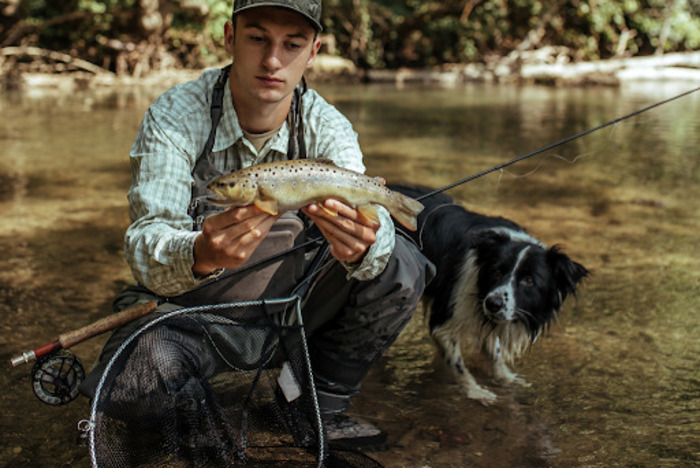
Understanding Trout Behavior
The key to any successful fishing trip is understanding the behavior of the fish you’re after. In the White River, trout are known for being especially elusive. Their movements can be influenced by a variety of factors, including the time of year, temperature, and water conditions.
Trout in the White River are known to prefer cooler, deeper waters, especially during the hotter months. They tend to move about in the river, following the flow of the water and are attracted to areas with higher levels of oxygen, such as where streams feed into the river.
Read more: Best Trout Lures of 2023 – Top-Rated Lures, Crankbaits & More For Fishing Trout
Proven Tricks for Successful Trout Fishing
Successful trout fishing on the White River often involves employing various techniques. One effective method is to use artificial lures that mimic the trout’s natural prey. However, using the right gear is equally important.
Spinning rods and reels are often recommended for their versatility and ease of use. When it comes to bait, minnows, worms, and jigs can be effective, but their use depends on the specific rules for the area you’re fishing in.
Seasonal Tips for Trout Fishing in White River
Fishing for trout in the White River can be a year-round activity, but there are certain times of the year when you may have more luck. The cooler months can often be the best times to fish, as the trout are more likely to be found in shallower waters.
Nevertheless, it’s essential to be aware of how changing water levels and flows can affect the behavior of the trout. So, regardless of the season, keeping an eye on the water and adjusting your techniques accordingly can greatly increase your chances of a successful catch.
Fishing Guides
Why Hire a Fishing Guide?
Fishing in the majestic White River of Arkansas can be an unforgettable experience. However, to make the most of this experience, hiring a guide is highly recommended. A skilled specialist has in-depth knowledge of the river’s diverse ecosystem, the behaviors of the trout varieties inhabiting it, and the best techniques to use. They can help you easily navigate the waterbody, ensuring you have a successful and enjoyable fishing experience.
What to Expect from a Fishing Guide
A fishing guide is more than just a guide – they’re a mentor, a teacher, and an expert angler. They will help you understand the habits of the fish, teach you the most effective techniques, and provide you with the necessary gear. They can also navigate the waterbody’s varying water levels and flows, which is crucial for a safe and productive trip. With a specialist by your side, you can focus on the joy of fishing while learning and honing your fishing skills.
Finding a Qualified Guide
Finding a qualified fishing guide is paramount to your fishing experience. Start by doing your research. Look for specialists who have extensive experience on the White River and a good reputation. Check their reviews and ratings, and ask for references if possible. Make sure they are licensed and insured, and that they prioritize safety. Remember, a good guide will not only help you catch fish but will also make your trip enjoyable and memorable.
Fishing Regulations
Arkansas Fishing Regulations
Arkansas State Parks offer diverse fishing experiences, and the White River is no exception. While it’s a fishing paradise, it’s essential to understand and adhere to the local regulations to protect this unique ecosystem and ensure a fair fishing experience for all.
Arkansas Game and Fish Commission (AGFC) governs the fishing regulations, including everything from licensing requirements to catch limits. Licenses are mandatory for anyone above 16 years old, and they are available for residents and non-residents alike. There are different types of licenses depending on the length of validity and the type of fish you plan to pursue.
Catch limits are also part of the regulations, which vary depending on the species. For instance, the daily limit for trout is five per day in aggregate. It’s also important to note the size restrictions in place for different species.
Ensuring a Safe and Legal Fishing Experience
Having a successful and legal fishing experience on the White River requires a thorough understanding of the state regulations. It’s advisable to remain updated with the AGFC’s latest rules as they may change yearly.
You also need to respect the environment and ensure you are not causing harm to the waterbody’s flora and fauna. This includes not littering, not disturbing the wildlife, and not damaging the vegetation.
Best Practices for Lucky Trout Fishing in White River: Catch & Release
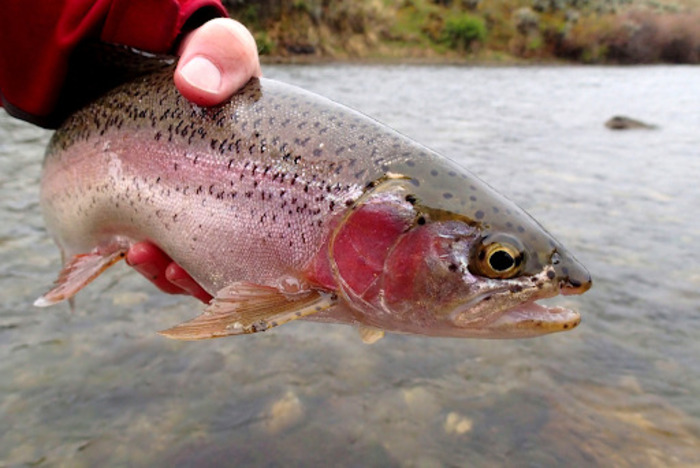
Ethical Catch & Release: Ensuring Trout Survival
Practicing ethical catch and release is crucial to preserving the trout population in the White River. The key is handling the trout properly to ensure their survival after release. Avoid exposing the trout to air for too long and wet your hands before handling them to minimize damage to their protective slime coating. Use barbless fishhooks and gently remove the fishhook from the trout’s mouth.
Catch & Release areas in the White River
The White River is abundant with designated catch and release areas. These areas are marked with special signs and are designed to preserve the trout population. Always check local guidelines and restrictions before you start fishing.
Utilizing Lures and Baits for Successful Catch & Release
When it comes to successful catch & release, selecting the right lures and baits is essential. Remember, the goal is not to harm the trout, so choose lures that are easy to remove from the trout’s mouth. Artificial baits are recommended as they are less likely to be swallowed by the trout. With proper technique and the right equipment, you can enjoy a fulfilling fishing experience while ensuring the survival of the trout for future generations.
FAQs
Q: What are some angling tips for trout fishing on the White River in Arkansas?
A: When fishing for trophy trout on the White River, it’s essential to use appropriate bait and fishing lines. Spin fishing and using powerbait eggs or shrimp are popular methods for fishing trout in this area. It’s also important to be knowledgeable about the current Arkansas trout fishing rules and have the appropriate fishing license and trout permit.
Q: Where is the best location for trout fishing on the White River?
A: The area below Bull Shoals Dam, known as the “Bull Shoals Trophy Area,” is a popular destination for trout fishing. This section of the river is heavily stocked with trophy trout and offers excellent fishing opportunities for enthusiasts.
Q: What fishing techniques are effective for catching trout in the White River?
A: Spin fishing with a spinner or bait fishing with appropriate bait such as shad, sculpin, or powerbait eggs can be effective for fishing trout in the White River. Understanding the appropriate fishing style and using the right equipment is crucial for a successful fishing experience.
Q: Do I need a special permit for trout fishing on the White River?
A: Yes, fishermen are required to obtain a trout permit in addition to their regular fishing license when fishing for trout on the White River in Arkansas. This permit is necessary to fish for the four species of trout found in the river.
Q: What is the catch-and-release policy on the White River?
A: The White River has a catch-and-release policy for certain sections, which means that fishermen are required to release any trophy-sized trout they catch back into the waterbody. It’s important to adhere to this regulation to preserve the trout population for future generations of anglers.
Q: When is the best time of day for trout fishing on the White River?
A: Trout are regularly active during early morning and late afternoon, making these times ideal for fishing. Fishermen often have good luck fishing in the shallow pools and areas with moderate currents during these times of the day.
Q: What should I be aware of when fishing near Bull Shoals Lake?
A: Fishermen should be mindful of the water level fluctuation caused by the Corps of Engineers’ operations at Bull Shoals Dam. It’s important to understand the impact of these fluctuations on the fishing conditions and adjust your fishing approach appropriately.
Q: What are some important considerations for using a fishing line for trout fishing?
A: Fishermen should use an appropriately weighted monofilament fishing line when trout fishing. Ensuring that the fishing line is the correct weight and length for the angling conditions can significantly improve the chances of a successful fish.
Q: How can I identify good fishing spots for trout on the White River?
A: Look for deep pools and areas with a steady current, as these are likely spots where trout gather. Also, pay attention to underwater structures such as rocks and banks, as these can provide favorable conditions for trout to congregate.
Q: Are there any specific regulations for bait and lures when fishing for trout on the White River?
A: Fishermen should ensure that they are using appropriate bait and lures that comply with the fishing rules in north-central Arkansas. It’s important to discover the approved bait and lures and avoid using non-compliant options to prevent any violations.

